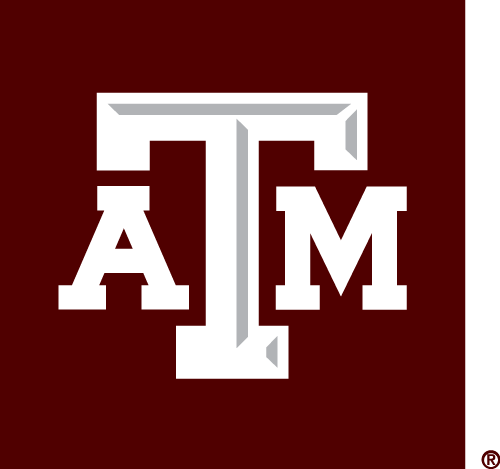Aggie Astronauts

Dr. Serena Auñόn-Chancellor
Professor of Clinical Medicine, Texas A&M Family Medicine Residency ProgramAuñόn-Chancellor joined the Johnson Space Center in 2006 as a flight surgeon under the UTMD/Wyle Bioastronautics contract. She was selected as one of 14 members of the 20th NASA astronaut class. Auñόn-Chancellor has served in the ISS Station Operations branch handling medical issues and the Capsule Communicator (CAPCOM) branch as a lead Capcom for multiple Commercial Cargo resupply missions. She spent 197 days in orbit in 2018 and her crew completed over 150 different experiments during her time on Expeditions 56 and 57 in multiple fields including: biology & biotechnology, cancer, Parkinson’s, and Alzheimer’s research, materials science, nuclear physics, physical sciences and Earth science. She currently serves as an Professor of Clinical Medicine for the Texas A&M Family Medicine Residency Program in College Station, as well as the UTMD Aerospace Medicine Residency Program Director. She also serves in the Astronaut Office where she covers medical issues and provides guidance for ISS, Lunar and Exploration-Class missions.

Dr. Gregory E. Chamitoff
Professor of Practice, Texas A&M UniversityChamitoff joined Mission Operations at the Johnson Space Center in 1995 and was selected as an astronaut candidate in 1998. In 2002, he was a member of the NASA Extreme Environment Mission Operations crew, where he studied and lived on the Aquarius undersea research habitat for nine days. Chamitoff served as flight engineer and science officer specializing in space station robotics for six months on the International Space Station (ISS). He flew aboard the space shuttle Endeavour on its last flight, installing a particle physics observatory and performing two spacewalks, including one to finish assembly of the ISS. He performed the final spacewalk of the Space Shuttle Program. Chamitoff spent more than 198 days in space.

Dr. Nancy J. Currie-Gregg
Professor of Practice, Texas A&M UniversityAfter serving in the U.S. Army for 23 years and attaining the rank of colonel before she retired, Currie-Gregg logged more than 4,000 hours on rotary- and fixed-wing aircraft. She was assigned to the Johnson Space Center in 1987 as a flight simulation engineer, selected as an astronaut in 1990 and completed astronaut training in 1991. She has flown on four space shuttle missions, accumulating about 1,000 hours in space. She was chosen to head the Space Shuttle Program’s Safety and Mission Assurance Office in the wake of the space shuttle Columbia tragedy in 2003. Her space missions included retrieving a European satellite, deploying a tracking and data relay satellite, the fourth Hubble Space Telescope servicing mission, and she assisted with the first ISS assembly mission, performing multiple spacewalks and deploying two satellites.

Dr. Bonnie J. Dunbar
Professor of Aerospace Engineering, Texas A&M UniversityDunbar joined NASA at the Johnson Space Center in 1978 as a guidance and navigation officer/flight controller overseeing Skylab’s reentry mission in 1979. She became an astronaut in 1981 and flew aboard five space flights, netting over 1,208 hours (50 days) in space. Dunbar flew on the Challenger, Atlantis, Endeavour, and Columbia space shuttles. She operated Spacelab, deployed satellites, and performed human medical studies on exercise and muscle performance. She served as payload commander on her last shuttle mission aboard the Endeavor for a mission that lasted nearly nine days.

Col. Michael E. Fossum ’80
BS Mechanical Engineering, Texas A&M UniversityChief Operations Officer and Vice President, Texas A&M University at Galveston
A veteran of three space flights, U.S. Air Force (Ret.) Colonel Fossum earned his Bachelor of Science in mechanical engineering at Texas A&M in 1980. He was commissioned in the U.S. Air Force that same year. He was detailed to Johnson Space Center after completing his graduate education and served as a test flight engineer in a F-16 test squadron. After logging more than 1,800 hours in 35 different aircraft, he resigned from active duty and joined NASA. He became an astronaut candidate in 1998 and later flew aboard three space flights, logging over 194 days in space and seven spacewalks totaling 48 hours. Fossum flew on the space shuttle Discovery twice before his third and final spaceflight aboard a Russian Soyuz rocket that launched in Kazakhstan which lasted 167 days in space.

Dr. Donald L. Holmquest
Former Associate Dean of Medicine, Texas A&M School of MedicineHolmquest earned doctoral degrees in medicine and physiology, specialized in nuclear medicine, and later earned a law degree in Houston in 1988. He joined NASA after an internal medicine internship and went on to earn Air Force Wings and serve on the Apollo and Skylab programs. Holmquest logged 750 hours flying jet aircraft. In 1967 he was selected as a scientist-astronaut. He completed a 53-week training course and worked on Skylab habitability systems and medical experiments. Holmquest was Chief of Nuclear Medicine at Ben Taub General Hospital in Houston, established the Department of Nuclear Medicine at Eisenhower Medical Center in California and served as associate dean of medicine at Texas A&M helping launch the new College of Medicine (now School of Medicine).

Maj. William A. Pailes ’81
MS Computer Science, Texas A&M UniversityPailes trained as an HC-130 rescue pilot in the Aerospace Rescue and Recovery Service and attended Squadron Officer School in 1978. He flew aboard the maiden voyage of the space shuttle Atlantis, traveling over 1.6 million miles in 98 Earth orbits. He logged more than 97 hours in space. The mission launched from Kennedy Space Center, Florida, and landed at Edwards Air Force Base, California.

Dr. Steven R. Swanson ’98
PhD Computer Science, Texas A&M UniversitySwanson joined NASA as a systems engineer and flight engineer working on the Shuttle Training Aircraft. In 1998, he began training as a mission specialist and was later assigned to the Astronaut Office Space Station Operations Branch upon completion of astronaut candidate training. Swanson flew on the space shuttle Atlantis in 2007, the space shuttle Discovery in 2009, and a Russian Soyuz rocket in 2014. Swanson completed four spacewalks totaling more than 26 hours and spent over 195 days in space.
